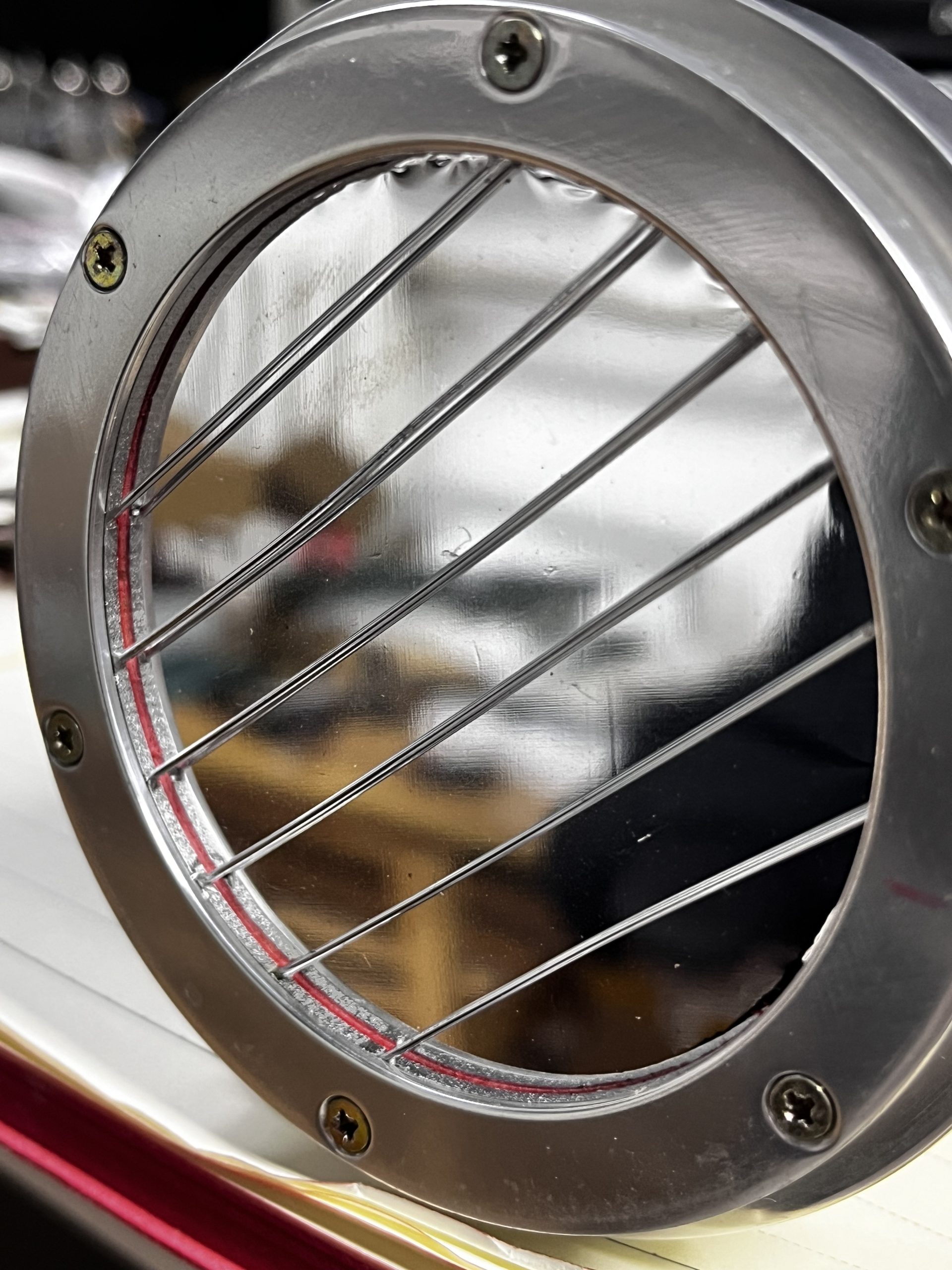
These tubes are housed in a fascinating little room on a university campus. There’s a river nearby that freezes over beautifully during the winter.I often conduct research and experiments here.
Tube zoo:

Photo tube ↑

NIXIE tube ↑

Geiger tube ↑


These tubes are housed in a fascinating little room on a university campus. There’s a river nearby that freezes over beautifully during the winter.I often conduct research and experiments here.






The BH3206 α, β Surface Contamination Monitor is primarily used for the measurement of alpha (α) and beta (β) radioactive contamination on surfaces. Its applications include monitoring floors, clothing, workbenches, and other surfaces in various settings such as environmental radiation surveillance, nuclear power plants, isotope production facilities, hospitals, and reactor sites.
The system is composed of a detector (probe), an operating console, and a printer. It can simultaneously measure total alpha and total beta counts from surface contamination. Measurement results can be stored in the internal memory (MCU), printed on-site, or transferred to a computer for data processing and printing.
This instrument does not support hot-swapping for its probe. I accidentally hot-plugged it, which caused the internal operational amplifier (op-amp) to burn out. After I replaced the damaged op-amp, the monitor was fully repaired and is now working correctly.

BH3206型α、β表面污染测量仪主要用于环境辐射、核电站、同位素生产、医院、反应堆场所的地面、衣物工作台、地板等表面的α、β放射性污染的测量。由探测器、操作台和打印机组成。可同时测出污染物表面总α、总β计数;测量结果可以存入单片机中,可现场打印结果,也可将结果输入计算机,通过计算机打印出来。
计数容量:1~106
测量时间:1~16000s
探测效率α:εα≥30%(2л,Φ50mm,239Pu面源)
本底≤2cpm
β:εβ≥30%((2л,Φ50mm,90Sr-90Y面源)
本底≤120 cpm
长期稳定性:≤±10%(239Pu,90Sr-90r;8h;计数>1000)
误差:<20%。
由于这个仪表不能热插拔探头,我在热插拔后导致内部的运算放大器烧毁,换掉后复原。
test version 0.1
This web-based system simulates neutron detectors, featuring real-time 3D visualization and integrated Monte Carlo physics simulations.

The system consists of the following main components:
1. Real-time Interactive 3D Visualization
2. Physics Simulation Based on the Monte Carlo Method
3. Data Charts and Results Display
1. Neutron Generation: Simulating the AmBe Source Spectrum

sampleAmBeEnergyEV function): We do not simulate the nuclear reaction itself. Instead, we “sample” from an approximate probability distribution. A truncated exponential distribution (-2.0 * Math.log(1 - Math.random())) is used to rapidly generate random neutron energies between 0 and 10 MeV. Macroscopically, this aligns with the characteristic of an AmBe source, which consists predominantly of high-energy neutrons.2. Neutron Transport and Interaction: A Layered Probabilistic Model
This is the core of the simulation. Each time a neutron enters a new region, we use a probabilistic model to determine its “fate.”
exp(-k*d). This is far faster than complex scattering calculations but similarly reflects the trend that “the farther the distance, the fewer neutrons arrive.”sigmaAbsBoron function): We directly implement the 1/√E law in the code to calculate the macroscopic absorption cross-section, Σa, for a given energy E. Then, using the Beer-Lambert Law, we calculate the probability that a neutron successfully passes through the shield of thickness tB without being absorbed: P_survive = exp(-Σa * tB). Finally, by comparing this probability to a random number between 0 and 1, we determine if this virtual neutron is “absorbed.”sampleCollisionCountHDPE function) to sample the number of collisions, where the mean number of collisions is proportional to the moderator’s thickness and density.E *= Math.random()). While not physically precise, this method very efficiently simulates the overall trend of exponential energy decrease, rapidly “pulling” high-energy neutrons down to the low-energy region.forwardSurvivalProb function, where a higher number of collisions results in a lower probability of successfully reaching the central region.3. Neutron Detection: The Final Probabilistic Check
capture probability in simulatePoint): We do not simulate the specific path of the neutron inside the He-3 tube. Instead, we abstract this into a final “capture probability.” This probability is based on an empirical formula that is positively correlated with all factors that intuitively increase detection efficiency, such as the He-3 gas pressure (P), the tube’s radius (rt) and length (L), and whether the neutron has been sufficiently moderated.基于Web技术的中子探测器模拟系统,集成了实时3D可视化、蒙特卡洛物理过程模拟。
主要包括以下几个部分:
⁹Be(α, n)¹²C 核反应产生中子。其能量不是单一的,而是一个从0到约11 MeV的连续谱,峰值能量在2-4 MeV左右。
sampleAmBeEnergyEV函数): 我们不模拟核反应本身,而是从一个近似的概率分布中进行“抽样”。这里使用了一个截断的指数分布 (-2.0 * Math.log(1 - Math.random()))来快速生成能量在0到10 MeV之间的随机中子能量,这在宏观上符合AmBe源以高能中子为主的特征。这是模拟的核心。中子每进入一个新区域,我们都用一个概率模型来决定它的“命运”。
在空气中传播:
1/r² 反比定律。exp(-k*d)。这比复杂的散射计算快得多,但同样能反映出“距离越远,到达的中子越少”的趋势。穿过含硼屏蔽层:
¹⁰B)对低能(热)中子有极高的吸收截面,遵循 1/v 定律(即吸收概率与 1/√E 成正比)。高能中子则几乎不受影响。sigmaAbsBoron函数): 我们直接在代码中实现了 1/√E 定律,计算出给定能量 E 下的宏观吸收截面 Σa。然后,利用比尔-朗伯定律,计算中子成功穿过厚度为 tB 的屏蔽层而不被吸收的概率 P_survive = exp(-Σa * tB)。最后,通过与一个0到1的随机数比较,来决定这个虚拟中子是否被“吸收”。在HDPE慢化体中慢化:
sampleCollisionCountHDPE函数)来抽样决定碰撞次数,其平均碰撞次数与慢化体的厚度和密度成正比。E *= Math.random())。这虽然不精确,但能非常高效地模拟出能量指数级下降的总体趋势,将高能中子快速“拉”到低能区。forwardSurvivalProb函数来模拟这个效应,碰撞次数越多,能成功到达中心区域的概率就越低。³He(n, p)³H 反应俘获,释放出能量,产生可测量的电信号。simulatePoint中的capture概率): 我们不模拟中子在He-3管内的具体路径,而是将其抽象为一个最终的**“俘获概率”**。这个概率是基于一个经验公式,它与所有直观上能提高探测效率的因素正相关,例如:He-3气体压力P、计数管的半径rt和长度L,以及中子是否被充分慢化。[de]